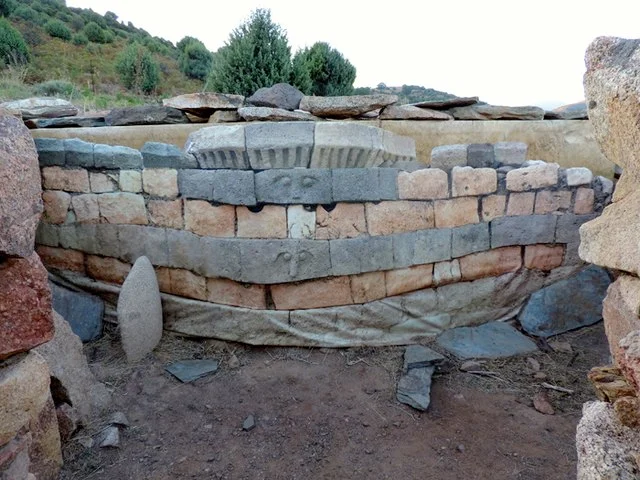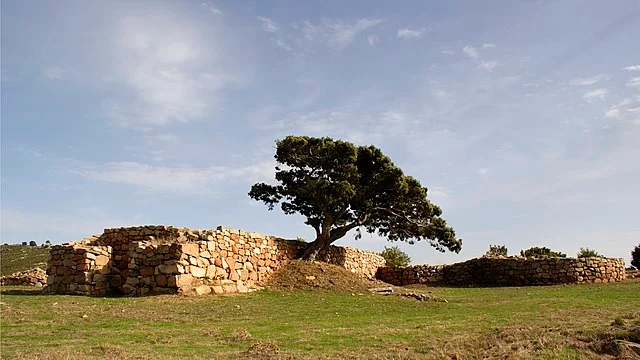The Nuragic complex of S’Arcu ‘e Is Forros is one of the most significant archaeological sites in Sardinia. It is located near Villagrande Strisaili, a region known for its dense concentration of Nuragic settlements. This complex, primarily dating to the Bronze Age, sheds light on the ancient Nuragic civilization that flourished in Sardinia from around 1800 BC to 238 BC.
Get your dose of History via Email
Architectural Layout and Structures

S’Arcu ‘e Is Forros stands out for its well-preserved buildings. The complex includes temples, circular huts, and sacred wells, all reflecting the advanced construction techniques of the Nuragic people. One of the central features is a three-lobed temple, a unique structure among Nuragic sites. Its layout suggests it served both religious and social functions, where rituals and communal gatherings took place.
In addition to the temple, the circular huts in the complex are similar to those found in other Nuragic villages. These were likely used for daily living activities, including cooking, crafting, and communal events. The presence of sacred wells indicates that water rituals played a crucial role in Nuragic religious life.
Religious Significance
Archaeological evidence suggests that S’Arcu ‘e Is Forros was an important religious center for the Nuragic people. The sacred well and temple structures indicate a connection to water worship and fertility rites. The presence of bronze artifacts, including votive offerings, highlights the religious practices of the time. These offerings were likely made to deities associated with natural elements, such as water and earth.
Metalworking and Trade
Another distinctive aspect of S’Arcu ‘e Is Forros is the evidence of metalworking. Researchers discovered several furnaces and metal objects, indicating that the site was a center for bronze production. This industrial activity points to a sophisticated level of technological knowledge. Furthermore, it suggests that S’Arcu ‘e Is Forros was part of a larger trade network, exchanging goods with other Nuragic sites and possibly with external cultures, including the Etruscans and Phoenicians.
Historical Context
The Nuragic civilization thrived in Sardinia for over a millennium, from 1800 BC to 238 BC, when the Romans began their conquest of the island. S’Arcu ‘e Is Forros likely reached its peak during the Final Bronze Age (roughly 1300 BC–900 BC). During this time, Sardinia was a crossroads for various Mediterranean cultures. The exchange of goods and ideas between Sardinians and foreign powers played a key role in the development of Nuragic society.
The complex remained active into the Iron Age (900 BC–238 BC), though its religious and political importance may have diminished over time as external influences increased. The site’s abandonment likely coincided with the Roman annexation of Sardinia in 238 BC, which marked the end of the Nuragic civilization’s dominance on the island.
Excavation and Research
Archaeological excavations at S’Arcu ‘e Is Forros began in the 20th century, with ongoing research uncovering new information about the site’s function and importance. Scholars continue to study the complex to better understand the role it played within the broader Nuragic society. The discovery of votive objects, metalworking tools, and unique architectural features makes it an essential site for understanding the religious, economic, and social dynamics of the Nuragic people.
Conclusion
The Nuragic complex of S’Arcu ‘e Is Forros offers valuable insight into the religious practices, industrial capabilities, and societal organization of Sardinia’s Bronze Age inhabitants. Its well-preserved structures and evidence of metalworking highlight the sophistication of the Nuragic civilization. Ongoing research will likely continue to provide deeper understanding of the complex’s role in the region’s prehistoric landscape.
Source:

